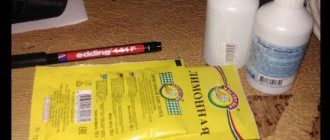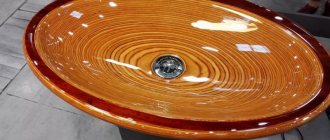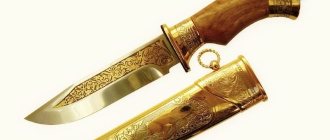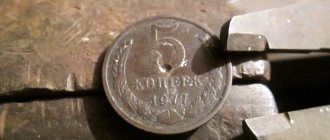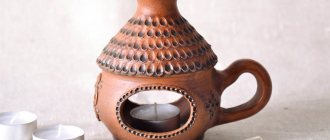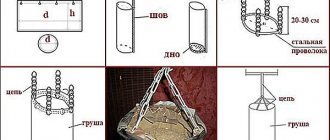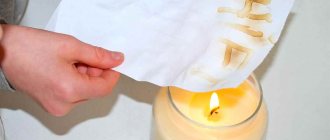Hello!
Jewelry that has lost its former attractiveness does not have to be hidden in a box until better times, because you can restore the metal yourself and visually increase its value without going to a jewelry workshop.
If your missus has been sighing for a long time over her favorite earrings, which have become dull with time, now is the time to please her. Although numerous videos on how to gild silver at home can instill fear, in fact, getting a beautiful product without large material and time costs is very simple.
What is gold plating and why is it applied?
Gilding is a coating of high-grade gold that is applied to the surface of a selected item at home or by a professional jeweler in a workshop. The item being processed can be made of any metal, but in most cases silver is used for this.
Gilding is done:
- to give a golden hue and emphasize the individuality of the product;
- updating the appearance of items;
- durability of a metal item.
How the process works
Before gilding silver items at home, it is important to ensure your own safety, for which this is perfect:
- rubber shoes;
- gloves;
- glasses for eye protection;
- apron.
Regardless of the method used, restoring silver at home always consists of the following steps:
- metal surface preparation;
- spraying or other coating;
- final processing.
Gilding metal is not enough. I recommend creating a protective layer on gold-plated silver. Nitrocellulose varnish is suitable for this.
Microcircuits containing gold
First of all, it is worth looking for gold in domestic radio components of the Soviet period - in imported ones the content of the precious metal is minimal. In many microcircuits, the gold is hidden under the copper casing. You can find out exactly the content of gold alloy in old microcircuits only by looking at the passport for this or that equipment.
Many microcircuits contain gold.
Gold is also found in round, ceramic, planar DIP microcircuits and transistors, plastic cases, and power transistors. In ALS indicators and diodes. In domestically produced connectors, pins with white or yellow coating of contact parts. In lamellas from boards. In ceramic monolithic capacitors of some brands, tantalum capacitors. In some switches, toggle switches, buttons, resistors. In rotation angle and pressure sensors. TPP and TPR thermocouples, thermal resistance, temperature sensors, strain gauges, pressure sensors. The installation wires have fluoroplastic insulation. In some generator lamps, in printed circuit boards with radioelements.
Much more gold is in Soviet computers. To achieve high performance, it was necessary to use a lot of precious metal. Most of these machines have been scrapped and replaced with modern and powerful ones, but such equipment is still found today and a decent amount of gold can be obtained from it.
List of precious metal content in old computers.
The easiest way to extract gold is from this technique. However, non-working equipment can be handed over to special collection points, which themselves sell it at their discretion and make a profit.
Among such equipment there may be a working one, but it is very expensive if offered to collectors.
Before proceeding directly to gold extraction, it is necessary to disassemble the device.
Pros and cons of gilding silver
Restoring silver at home will allow you to obtain an aesthetically attractive product without large material costs.
Advantages of using this technology:
- the opportunity to experiment with the appearance of jewelry. If desired, you can order additional engraving or a complex design from the jeweler, which is difficult to reproduce at home;
- silver objects are lighter than gold. Weight is important for both jewelry and cutlery. For example, a gilded silver pendant with stones will please its owner much longer than a gold one due to its light weight;
- affordable price. Silver is much cheaper than gold, and with high-quality work, gold-plated metal at home does not differ visually from gold;
- damaged coating, if necessary, can be easily restored at home. It is less expensive than purchasing a new item;
- variability of coating colors;
- When properly used, gilded silver is durable;
- Gold-plated silver is thicker and has better thermal conductivity, which is why it is used in elements for mechanical watches.
Before gilding silver at home, you should familiarize yourself with the disadvantages of such a procedure:
- Gold-plated items are difficult to care for. It is necessary to constantly ensure that jewelry comes into contact with skin and liquids less often. Dishes with such a coating are contraindicated to be washed in a dishwasher or with the use of chemicals. There are special solutions for cleaning gold plated utensils at home;
- high-grade gold, which is used for gilding, is very shiny, so it is unlikely that it will be possible to hide the true material from the experienced eyes of jewelry lovers and specialists;
- gilding does not prevent the oxidation of the metal, so spots may appear on the treated silver, especially if the operating conditions are not met.
"Golden" silk-screen printing
Silk-screen printing with gold inks is most often used for the production of business cards, folders, envelopes, postcards, bags, etc.
Pros of using gold paint:
- No need to make cliches.
- Possibility to print on ready-made flat products.
- Ability to work with fairly thin lines and large images.
Nuances:
- There is no pronounced metallic sheen (the foil shines more).
- Limitation in the choice of materials (on “rough absorbent” papers the print will “fail”, i.e. it will be smeared and absorbed, it will turn out uneven and dim).
- Inability to create a gradient.
How long does it last
The durability of the coating is affected by how carefully the silver is stored and worn. If an item is purchased in a jewelry store and has quality certificates, it will delight the owner for more than 2 years. Earrings and brooches that have little contact with the body will retain their visual appeal longer than a chain or bracelet.
Factors that negatively affect the durability of gold-plated items:
- contact with water and chloride compounds contained in it;
- exposure to concentrated chemicals;
- improper care;
- constant friction against the skin, interaction with sweat.
Foiling
What is foiling? In a nutshell, this is lamination over lamination.
Foil foiling is used for the production of leaflets, postcards, business cards, diplomas and certificates. It is ideal for small runs of stickers (flexo printing is used for larger runs).
Pros of foiling:
- Short production times.
- Pronounced (but glossy) shine.
Nuances:
- All restrictions for digital printing apply to foiling: format, density, etc.
- Foil applies only to already laminated sheets, so there is no point in using textured designer papers.
- Possible imperfect adhesion to the surface and a shimmering effect if the product uses a dark background.
- No gradient possible.
Methods of gilding silver
The quality of the resulting coating depends on the chosen technique for creating gilding at home.
The most popular methods:
- chemical method;
- mechanical;
- electroplating
All of these options are suitable for doing at home and involve the use of a reaction of special chemical compounds.
Chemical method
This option of gilding involves applying gold chloride to silver or other material at home.
Stages:
- prepare aqua regia (a compound of concentrated acids);
- dissolve the gold product, divided into small fragments, in the resulting substance;
- evaporate the water until a dry residue is obtained;
- mix the resulting substance with calcium carbonate and a solution of potassium cyanide until a paste-like consistency is obtained;
- apply the mixture to the silver with a brush;
- After drying, rinse the item under running water and polish.
Mechanical method
This method is used very rarely, since achieving uniformity of the surface layer at home is not easy.
Features of mechanical gilding:
- To obtain the desired result, a special rubbing paste is used. The composition is prepared in a specialized store or at home;
- The mechanically applied coating has a very thin layer. It will not retain its attractive appearance for a long time, even if the item is gilded in compliance with all the rules and conditions;
- The composition of paste for gilding most often includes cream of tartar, crushed chalk and yellow blood salt. They are mixed with water until a homogeneous mass is obtained and rubbed into the surface of the object using a piece of natural wool;
- before gilding an item at home, it must be degreased with a special solution;
- The paste is applied to the product in an even layer. When rubbing, it is important to ensure that it does not get on exposed skin.
Due to the complexity of execution, the mechanical method is most often used if only a small area of silver needs to be gilded. Other technologies involve completely immersing the object in the solution.
Galvanic method
Electroplating allows you to gild metal and create a durable coating. By changing the proportions of the constituent substances, even at home you can get gilding of different shades.
Procedure:
- clean, degrease and polish the silver product;
- prepare electrolytes based on water, sodium phosphate, potassium cyanide, gold chloride and sodium sulfide;
- heat the solution to a temperature of 60 °C and lower the object into it;
- install anode.
Gilding silver in this way at home takes an average of 14 hours. Upon completion of all stages, the item should be dried on sawdust and polished.
Where to deliver the received material and at what price?
The gold ingot (barrel) obtained as a result of purification most often has insignificant weight. However, even in such quantities it is of interest to buyers.
Advertisements for buying gold can be easily found on the Internet or in local newspapers.
Often, solid metal is purchased by the same companies that buy radio components.
(for example, aluminum or brass) may also be interested in gold
If the buyer is in the same city as the seller, the transaction is completed upon visiting the specified address.
The buyer himself weighs the metal and checks its quality, after which he sets a price. Of course, if possible, it is advisable to check all offers on the market in order to choose the most profitable one. The bullion can be sent to another city by mail, cash on delivery.
Some pawnshops are also ready to accept goods of this kind. To find out at what price the establishment will be willing to purchase gold, contact a pawnshop employee. Another option is to submit an ad yourself . In this case, you just have to wait for a call from a potential buyer.
If you engage in refining on an industrial scale, you should rely on existing laws.
To legally engage in the circulation of precious metals, you need to register as an individual entrepreneur or create an LLC.
When selling gold, focus on its purity and market value.
The price per gram of 999 fine precious metal is set by the Central Bank of Russia . Since 2004, its prices have been continuously rising. The most significant jump was observed in 2016, when the cost exceeded 3 thousand rubles per gram.
Preparing a composition for gilding at home
You can prepare the solution for gilding yourself.
To do this, mix:
- water (1500 ml);
- gold chloride (10 g);
- potassium cyanide (30 g);
- salt (20 g);
- soda (20 g).
To obtain a thinner layer of gold plating you will need:
- water (2 l);
- gold chloride (15 g);
- yellow blood salt (65 g);
- carbonic potassium salt (65 g);
- table salt (65 g).
All components must be well dissolved, otherwise the gilding layer will be uneven, and even thorough polishing will not help. When the product is immersed in liquid, it is necessary to lower a zinc stick into the container (zinc contact method).
Offset printing (standard) with Pantone bronze paint
As you may have guessed from the name, offset paint still has a bronze, rather than gold, tint, that is, it is not quite “gold,” but a close solution. Applicable for any printing products.
In the photo you see pantone fans with foil for embossing between them. The second photo from the top is a bronze print, the bottom is a direct print on a digital machine.
Advantages of offset printing with bronze pantone:
- Possibility of printing on large formats (up to A1).
- Ability to use gradients.
- The ability to combine this printing method with other types of printing (that is, after offset printing, you can add any other type of application).
Nuances:
- “Standard” offset printing is applied to absorbent materials; a bright, saturated “gold” print (as with embossing) will not work.
- There is no point in printing on dark grades (no effect).
- Impossibility of printing on finished products.
Rules for using gold-plated products
The durability of gold-plated items depends on their proper use and storage conditions.
Recommendations for use, following which you can enjoy the beauty of gold-plated products for many years:
- Are you going to take a bath or shower? Be sure to remove earrings and other gold-plated jewelry. It is important to prevent them from coming into contact with soapy water;
- store items in closed boxes, caskets, avoiding exposure to sunlight and moisture. To prevent jewelry from being scratched, you need to place each item in a soft fabric bag or place it in separate chests;
- gilding a product with a thick layer of metal is not enough; it is important to clean it properly;
- Do not store gold-plated jewelry in the kitchen, bathroom or other rooms in high humidity conditions.
Cleaning
To clean a gold-plated item at home without damaging the coating, you will need:
- suede cloth;
- vinegar;
- ethanol.
Suede is useful for polishing silver. It is used immediately after cleaning to give things shine. If a piece of jewelry that has been successfully gilded is worn every day, you should wipe it with a cloth every evening before placing it in the box.
Small stains can be removed with ethyl alcohol. Silver is treated with a cotton pad soaked in the substance. An aqueous solution of vinegar will help remove significant stains; just place a silver item in it for a quarter of an hour.
Under no circumstances do I recommend immersing silver in a soap or soda solution: in such conditions, the decorative coating will be irrevocably damaged.
Direct printing with gold ink on digital machines
In the photo you see a print from the same layout using a digital machine, but on different papers. On top is a non-absorbent type of paper, on the bottom is absorbent.
Gold ink printing is suitable for making business cards, postcards, invitations, certificates, etc.
Advantages of digital printing with gold ink:
- Quite high production speed.
- Possibility of gradient printing.
- With the right selection of materials, it is possible to achieve an embossing effect.
Nuances:
- Printing is carried out only on sheet materials (paper or cardboard).
- It is not possible to print on finished products.
- The dependence of the final color of the print on the coating of the material (the print can greatly change its color (for example: from bright gold to tarnished bronze or almost green).
- The need to take into account the requirements for printing on digital machines: restrictions on material density (most often up to 350 g/m2) and format (SRA3, 450×320 mm), etc.
Offset printing with foil inks
This type of printing is used for the production of any printed products.
Advantages of offset printing with gold foil ink:
- Possibility to print on different formats (up to A1).
- Printing on non-absorbent materials (including plastic).
- Brightness and saturation of prints.
Nuances:
- Use of highly specialized equipment (a small number of printing houses have them).
- High cost of application.
- Impossibility of printing on finished products.
Does the Law allow it? Conditions for the legality of activity when receiving a permanent income
To mine precious metals at home, you will definitely need a license. Otherwise, such transactions with gold will be illegal. Such operations are regulated by Article 191 of the Criminal Code of the Russian Federation on “Illegal trafficking in amber, jade or other semi-precious stones, precious metals, precious stones or pearls.”
- Opening an LLC with a legal address. A license can be obtained by a legal entity that has a legal address. Therefore, to legally extract precious metals, you need to open an LLC.
- Obtaining a license to operate. A license can only be obtained by a legal entity with a valid legal address. The applicant must provide the following documents to the Assay Office:
- Statement;
- Copies of documents for real estate premises used in the activity;
- Confirmation that the premises used comply with fire safety requirements.
Borax and soda for further processing and reduction of precious metal losses
Borax or sodium tetraborate is widely used in everyday life and is not a toxic element. Sometimes borax is used in gold extraction - it is easily available and cheap. With its help, you can extract much more precious metal than using methods such as amalgamation.
Since home gold mining involves small volumes of solar metal, it is very important to minimize losses. Adding borax to the precious metal flakes at the final stage of refining will simplify subsequent processing steps and also reduce volume loss.
Instead of borax, you can use soda, which has a lower melting point.

